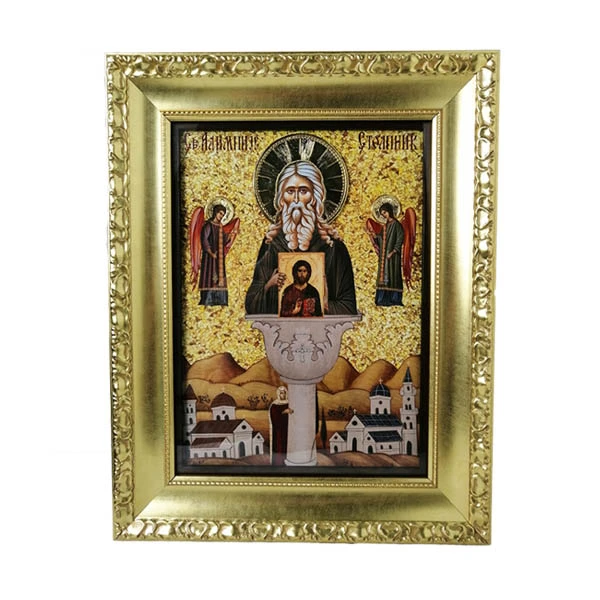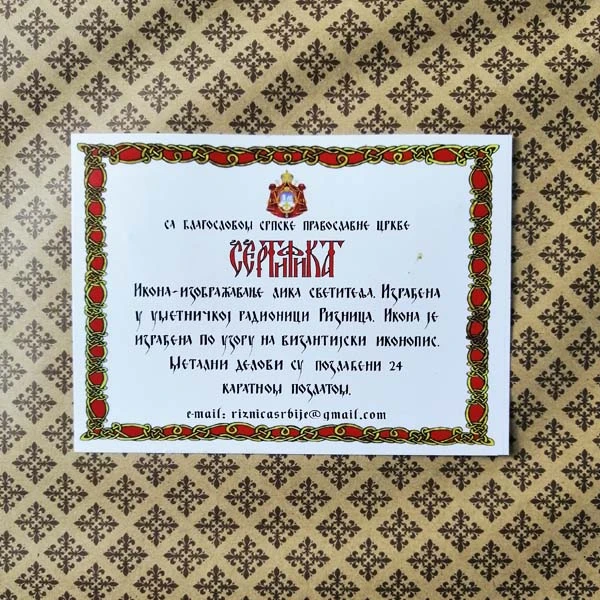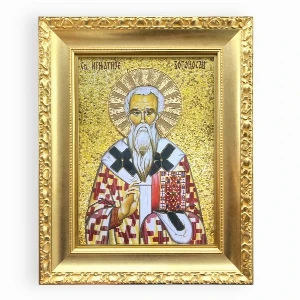- Home
- Orthodox Religious Products
- Icons
- SLAVA ICON ST. ALYPIUS THE STYLITE 41x33
SLAVA ICON ST. ALYPIUS THE STYLITE 41x33
Šifra: E-146-37
Brand: Riznica nacionalnog blaga
The icon of Saint Alypius. The metal parts of this icon for Slava are gilded with 24-karat gold, which is the finest and purest gold on the market.
The icon is modeled on Byzantine icon painting. Byzantine icon paintings are the oldest and most detailed icon paintings in the history of Christianity, which means that this icon contains everything, even the smallest details, which were passed down from generation to generation by icon painters since ancient times.
An icon that will decorate the wall of your home and glorify the saint who is the guardian of your home. Make your home more beautiful, and fame more cheerful!
In addition to the celebratory purpose, you can also give it to someone as a benevolent gift and protection for the family to whom it is presented.
DETALJNIJE
- The icon of Saint Alypius is in the frame
- Dimensions: 41x33 cm
- It contains a certificate of the National Treasure Treasury
- 24 carat gold plating of metal parts
- The icons are not sanctified!
According to Christianity, the icon should be kept on the east wall of the house!
Saint Alypius Stolpnik is a Christian ascetic (one who renounces bodily pleasures for religious reasons) from the 7th century.
On December 9, the Serbian Orthodox Church and believers celebrate the Venerable Alimpij Stolpnik. Although he is not marked with a red letter in the calendar, this saint is highly respected by the Serbian people, and according to some data, he is in fifteenth place among the Serbs in terms of the number of priests. It is most often celebrated in Podrinje as a baptism.
Serbs believe that St. Olympias overcame the plague, stopped leprosy, warded off unhealthy winds and performed various other miracles. It is celebrated by herdsmen, so on his day, draft cattle are not harnessed. One goes to church early so that everything will be healthy in the coming year.
Although he was loved by everyone, he always gravitated towards a solitary lifestyle.
As the desire to live a solitary life prevailed, he retired to a Greek cemetery from which people fled because of the belief in demonic apparitions. There he settled on a pillar (pillar), having previously removed the pagan symbols and erected a cross. He spent most of his life on the pillar in cold and heat, fasting and praying (according to Christian tradition, about 53 years). This is why he was called a steeplechase and remained consistent despite the temptations and ridicule of people.
Recommended
Related products

Apply for newsletter
Sign up for the Serbianshop newsletter and get a 10% discount.

















